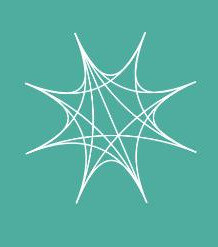Abstract
Research question: The main research question addressed by the SFB “Advanced Computational Design” is how to advance design tools and processes through multi- and interdisciplinary basic research in the areas of digital architecture, integrated building design, computer graphics and virtual reality, discrete and applied geometry, and computational mechanics.
Wider research context: Architecture, Engineering and Construction (AEC) shapes our built environment, exerting substantial environmental, cultural and economic influence on society. However, it is among the least digitized industries, still caught in silo-thinking and sequential planning processes. The Information and Communication Technology field, on the other hand, is highly innovative, creating digital design tools that are well-founded in basic research, but often lack relevant domain knowledge, thus hardly meeting designers’ needs.
Innovation: We will connect architecture, computer science, mathematics and engineering in order to develop advanced computational design tools able to incorporate implicit and explicit design knowledge. This unique combination of scientific disciplines and collaborative research with strong theoretical foundations aims to bring radical innovation in computational design by allowing immediate feedback already in early design phases and by expanding solution spaces by computing design variants that cannot be found by current methods.
Approach: The proposed research is structured in three areas: Design Methodology (A1), Visual and Haptic Design Interaction (A2) and Form Finding (A3). A1 uses ontologies to describe AEC design semantics, coupled to a novel digital mixed-reality sketchbook, and an innovative implicit modeling approach based on retrieving and enhancing 2D images and 3D point clouds through transfer learning. A1 also acts as a platform for integrating and evaluating the computational tools and methods developed in A2 and A3. These areas will investigate research questions in computational design involving algorithmic solutions. A2 investigates real-time global-illumination and optimization algorithms for lighting design, as well as a new method for large-scale haptic interactions in virtual reality based on a mobile robotic platform. In A3, form finding will be explored regarding geometric, mechanical and material constraints, in particular: paneling of complex shapes by patches of certain surface classes while optimizing the number of molds; algorithms for finding new transformable quad-surfaces; mechanical models for an efficient simulation of bio-composite material systems. Furthermore, new ways of form-finding will be explored experimentally, which will allow for validating the developed algorithmic approaches and reconsidering model assumptions and constraints.
Added value: The fundamental computational tools and methods to be developed will be applicable in AEC and other fields of the creative industries.
Project partners
- TU Graz (Graz Austria)
- Universität Innsbruck (Innsbruck Austria)
Funding provided by
- FWF - Österr. Wissenschaftsfonds

